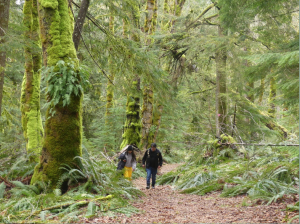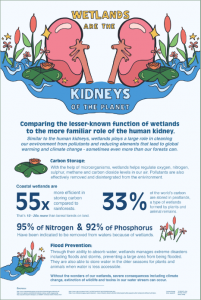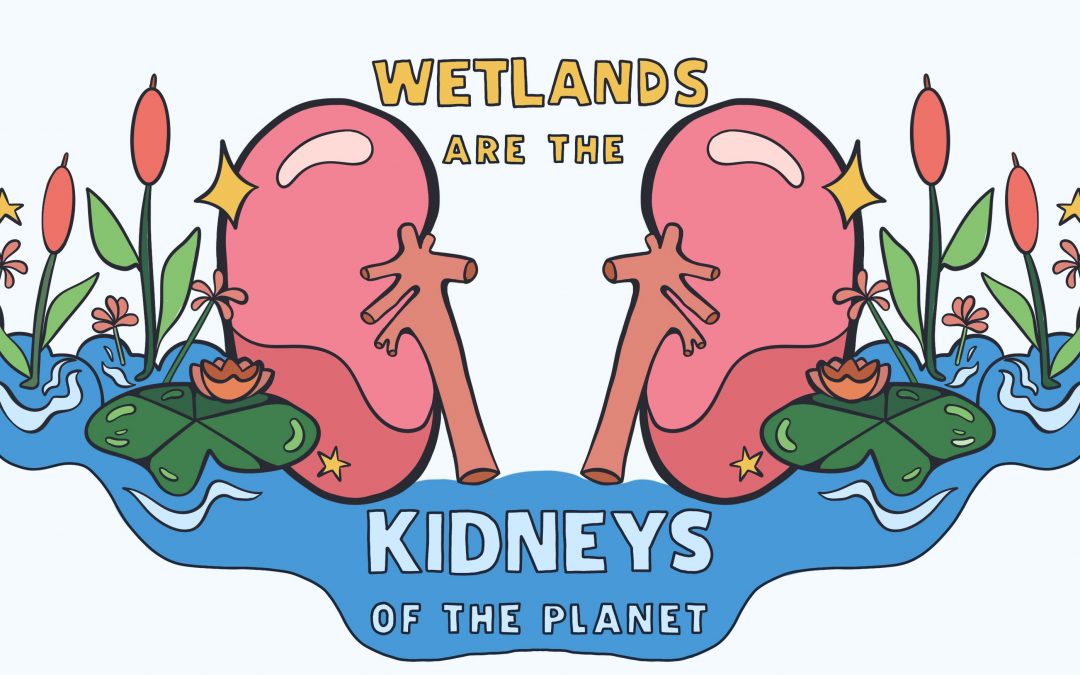How do you build numeracy skills and a connection to the land while providing real world experience to students?
 Among the many inspiring stories of the 2022 Teaching and Learning Symposium was the partnership between Danielle Will’s Math 123/139 courses and the Átl’ka7tsem / Howe Sound Biosphere Region. Using the math principles introduced in the course, students were encouraged to explore the Long Bay Wetland Nature Reserve on Gambier Island and to think deeply about the deep roots and connections around them. Then they worked together to produce data visualization infographics, telling a story from that place that they found particularly compelling.
Among the many inspiring stories of the 2022 Teaching and Learning Symposium was the partnership between Danielle Will’s Math 123/139 courses and the Átl’ka7tsem / Howe Sound Biosphere Region. Using the math principles introduced in the course, students were encouraged to explore the Long Bay Wetland Nature Reserve on Gambier Island and to think deeply about the deep roots and connections around them. Then they worked together to produce data visualization infographics, telling a story from that place that they found particularly compelling.
The results provide a fascinating and stunningly beautiful peek into the complex and delicate ecosystems of this region. The project also provided students with an experience of deep connection to the land as well as applied work experience in data visualization for their portfolios. Both the Island Trust Conservancy and the Átl’ka7tsem / Howe Sound Biosphere Region have found the infographics to be invaluable in their advocacy and education work and are eager to continue the work with CapU students.
ecosystems of this region. The project also provided students with an experience of deep connection to the land as well as applied work experience in data visualization for their portfolios. Both the Island Trust Conservancy and the Átl’ka7tsem / Howe Sound Biosphere Region have found the infographics to be invaluable in their advocacy and education work and are eager to continue the work with CapU students.
Danielle Wills is eager to continue the work as well.
“As an educator in STEM, this was my first experiment with region-integrated learning. It lit a spark in my heart that will guide my teaching practices far into the future. The students who worked on this project are Indigenous learners from the University One program who were taking my class on Contemporary Mathematics, and students in my Mathematics in the Visual Arts class. This amazing fusion of diverse skills set the tone for the magic that followed.
 Through the students, their stories and perspectives, we entered a deep state of connection with the land. It was an unforgettable honour to walk alongside them through those ancient natural spaces, feeling our place within the amazing web of life. Bringing those experiences back into our regular classroom was like bringing home a piece of living root, something that will naturally grow and live on as a renewable project, multiplying into yet unimagined forms as it continues to be watered by new minds. I am blown away by how it flourished in the hands of these students, and am just so excited to see where future students take it! ”
Through the students, their stories and perspectives, we entered a deep state of connection with the land. It was an unforgettable honour to walk alongside them through those ancient natural spaces, feeling our place within the amazing web of life. Bringing those experiences back into our regular classroom was like bringing home a piece of living root, something that will naturally grow and live on as a renewable project, multiplying into yet unimagined forms as it continues to be watered by new minds. I am blown away by how it flourished in the hands of these students, and am just so excited to see where future students take it! ”
For more information:
Work-integrated learning at CapU
The Átl’ka7tsem / Howe Sound Biosphere Region

Recent Comments